Clean Code - Best Practices
March 20 2023
Background
I'm not sure if I know any programmer, engineer, architect, or even HR who doesn't know who Uncle Bob is and what the Clean Code book is.
If by some miracle you are one of them, it's a concept that refers to writing code that is easy to read and maintain.
Since this is the 6th issue newsletter, today I'm going to show you 6 things you should or shouldn't be doing in your code that you can change in your code right away.
You may know some of these, but it's okay to remember some things because we all make mistakes even after many years of experience.
1#: Avoid Pyramids
When we talk about pyramids or ladders in code, we're referring to multiple layers of if/else statements that can quickly become confusing and difficult to read. This can happen when we have a complex set of conditions that we need to check in order to execute a particular block of code.
The problem with pyramids is that they make it hard to follow the logic of the code. It's easy to get lost in the maze of nested statements and lose sight of what's really happening. This can make it difficult to debug and maintain the code in the future.
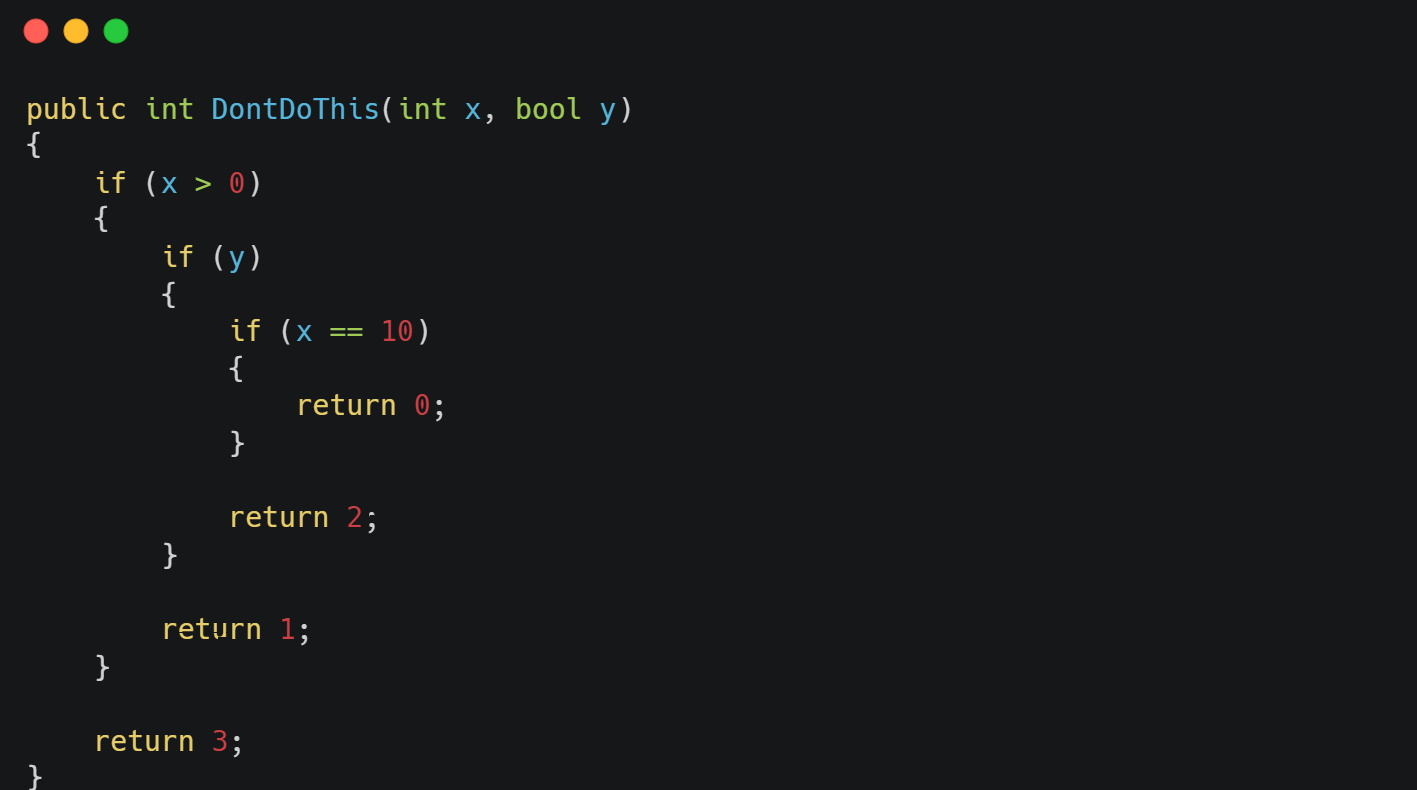
So, what's the solution?
One approach is to use guard clauses, which are essentially early return statements that check for a condition and exit the method or function if it's not met.
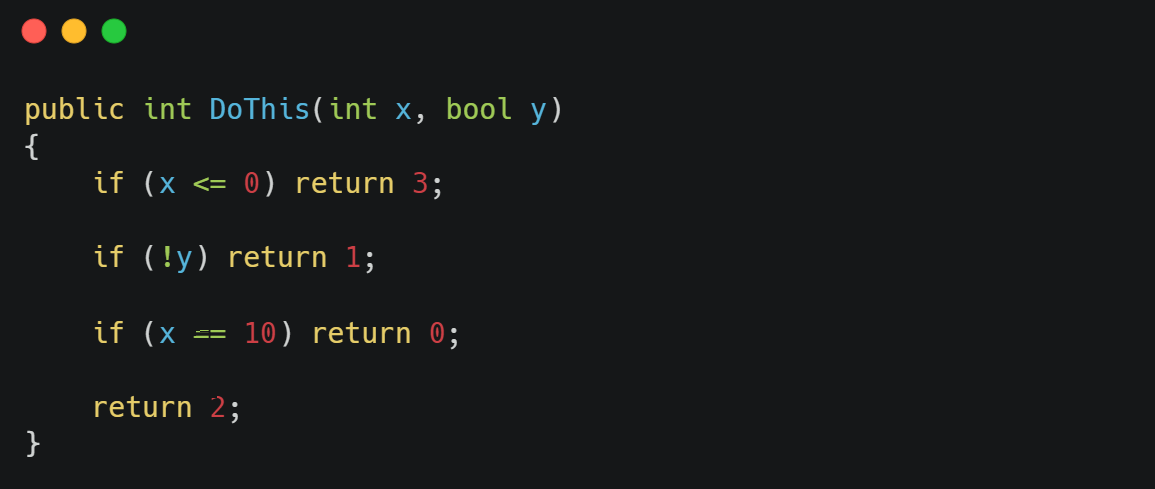
2#: Avoid magic (numbers, strings)
The problem here are hard-coded values that are used throughout the codebase without any clear explanation of what they mean.
For example, imagine a scenario where the number "100" is used multiple times throughout the codebase without any indication of what it represents. This can make the code difficult to understand and maintain over time.
Here is an example:
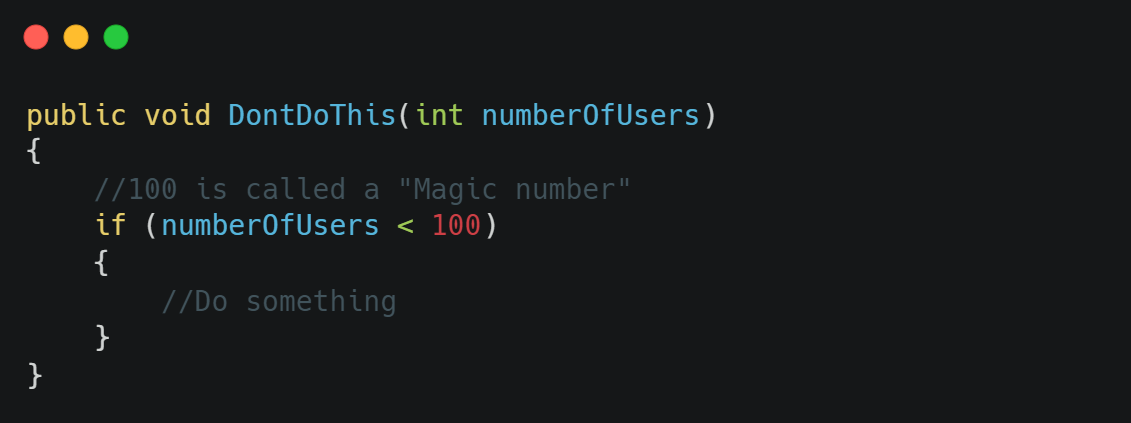
Solution?
The key is to use constants or enums to represent these values instead of hard-coding them. This makes it clear what the values represent, and also allows you to change them in a single place if needed, rather than having to update every instance throughout the codebase.
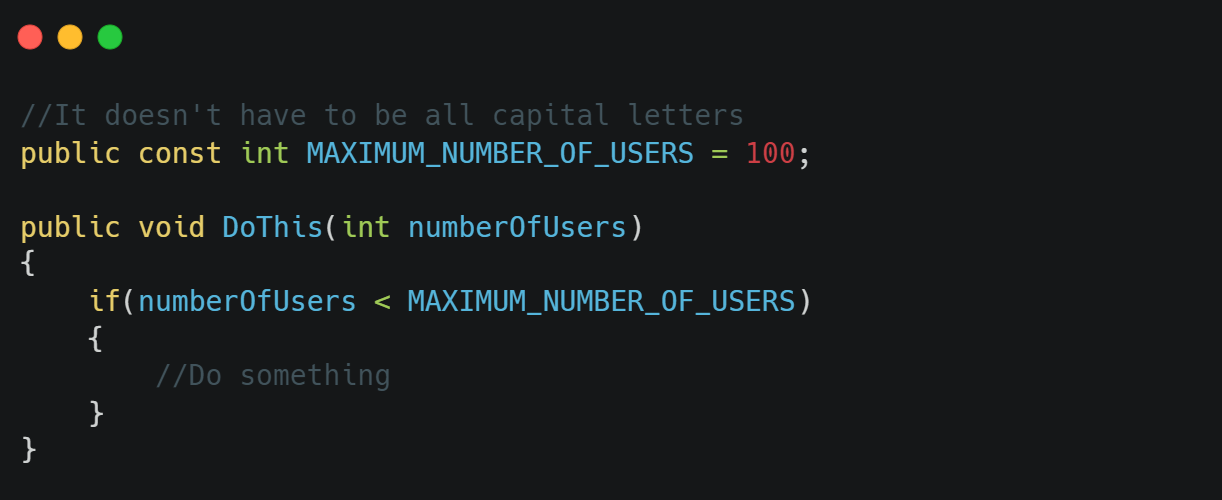
3#: Avoid Return null collection
Why you should not do this:
• Possible NullReferenceException
• We always need to check for null
• Slow Performance (checking for null, throwing/catching an exception, etc.)

Instead, just return an empty collection.

4#: Avoid Too Many Method Parameters
Let's say we have a class that's working with Addresses. We are calling a method AddAddress to persistence details. The address can have StreetName, StreetNumber, PostalCode, Country, City, and Region properties. If all of these parameters are passed into the method separately, it can become difficult to read and understand the code.
Example:

To avoid too many method parameters, you can use a few different techniques. One approach is to group related parameters into a single object or struct.
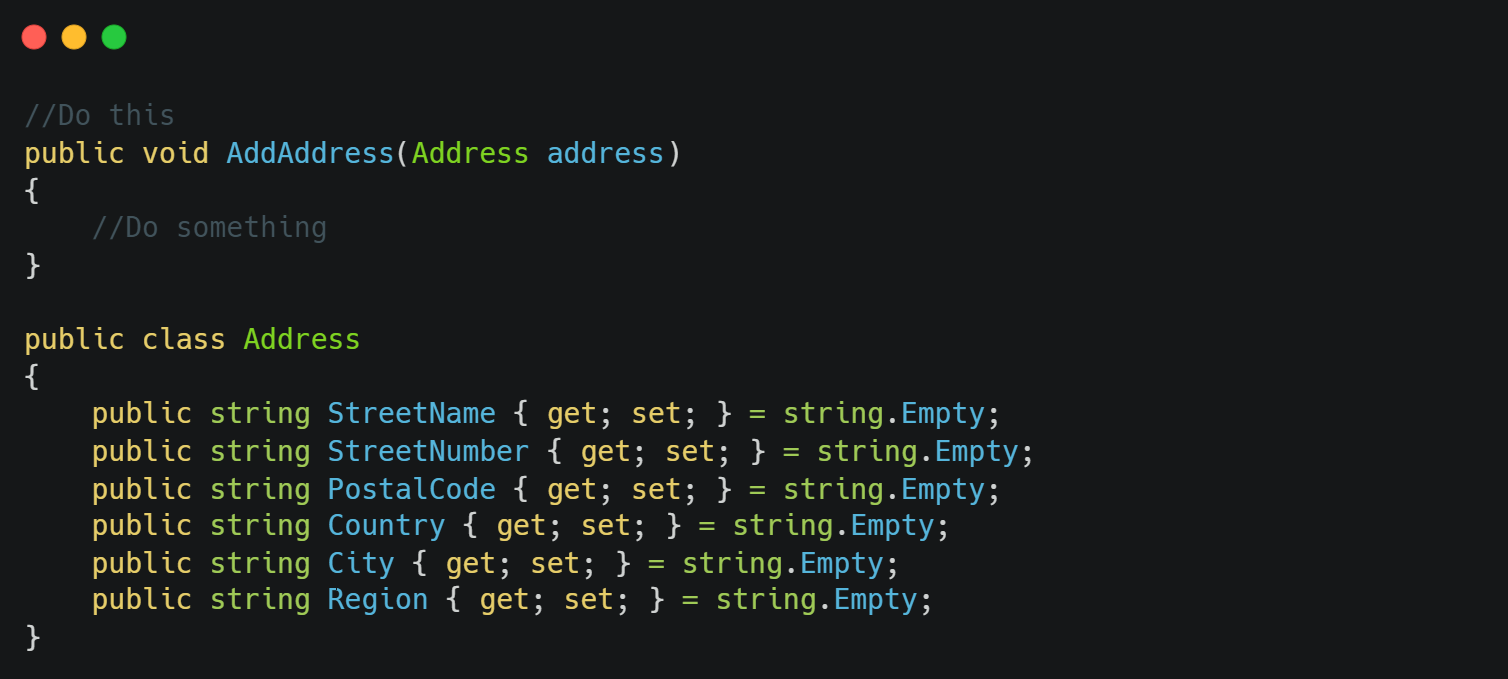
5#: Be Strongly Typed
Don't be "Stringly" typed.
Similar to "Avoid Magic" but on a higher level. Imagine you have an employee class/object with 10+ types in a company (manager, hr, CEO, etc.).
Whenever you check the type through "magic strings", it can be disastrous on multiple levels.
Don't do this ever:

Just create an enum that will represent the type:
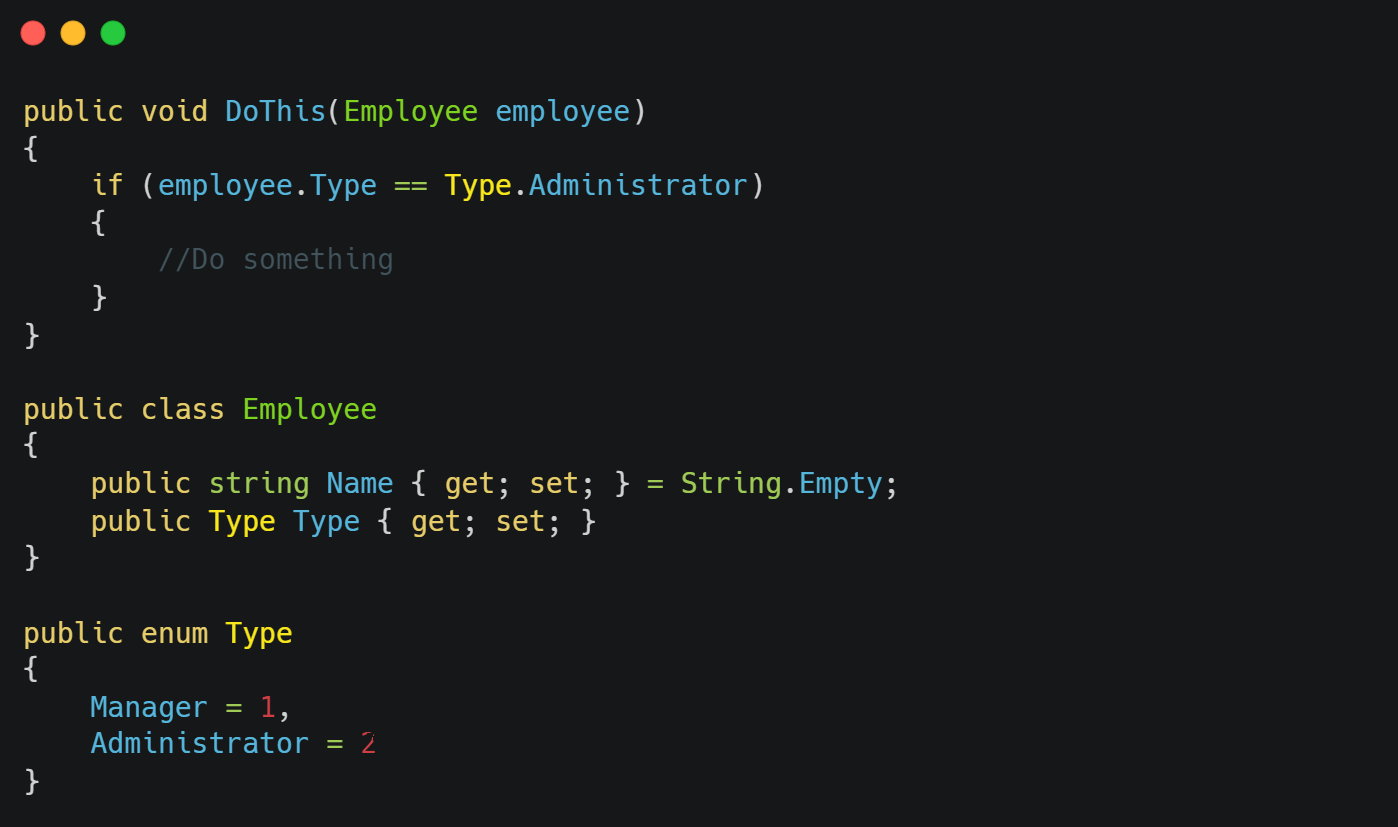
6#: Your method should do one thing only
Potential problem:
When you're writing code, it can be tempting to include multiple functions within a single method to make it more efficient. However, this can actually make your code more difficult to read, and maintain over time.
"Bad" example:
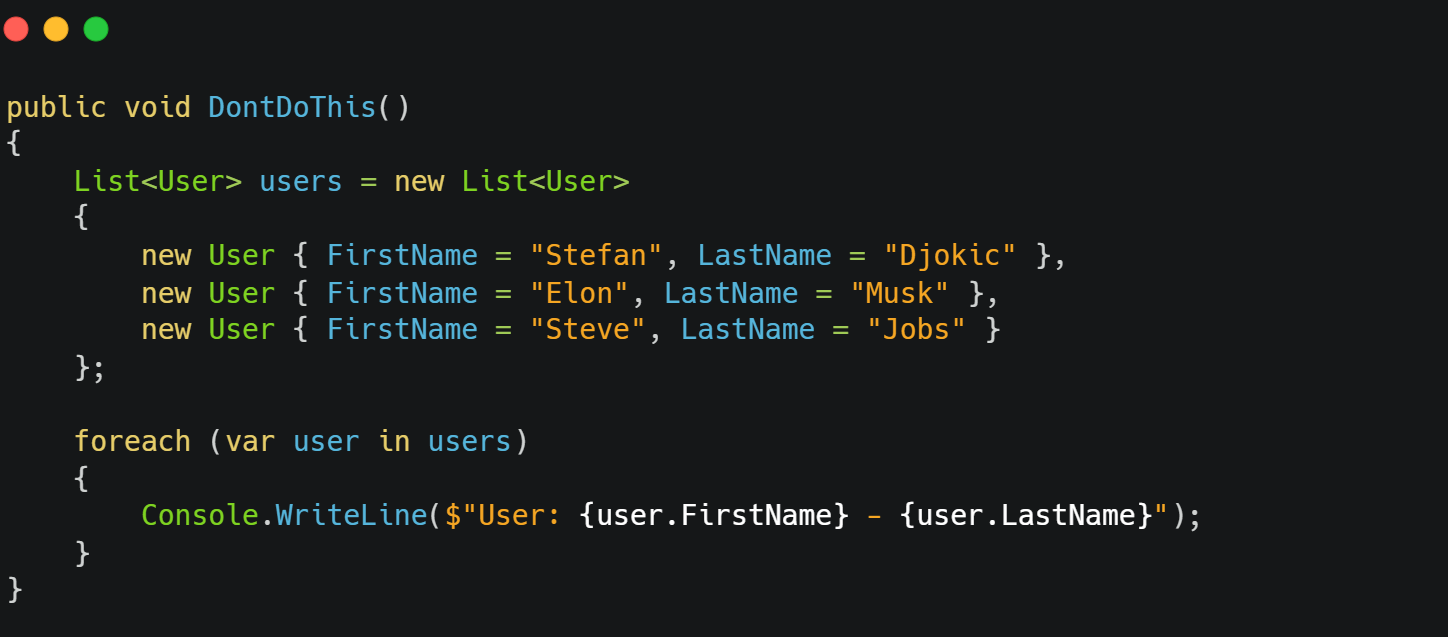
Way to resolve?
Single Responsibility Principle (SRP). By following the SRP, you can create more modular and organized code that is easier to work with.
Just separate concerns:
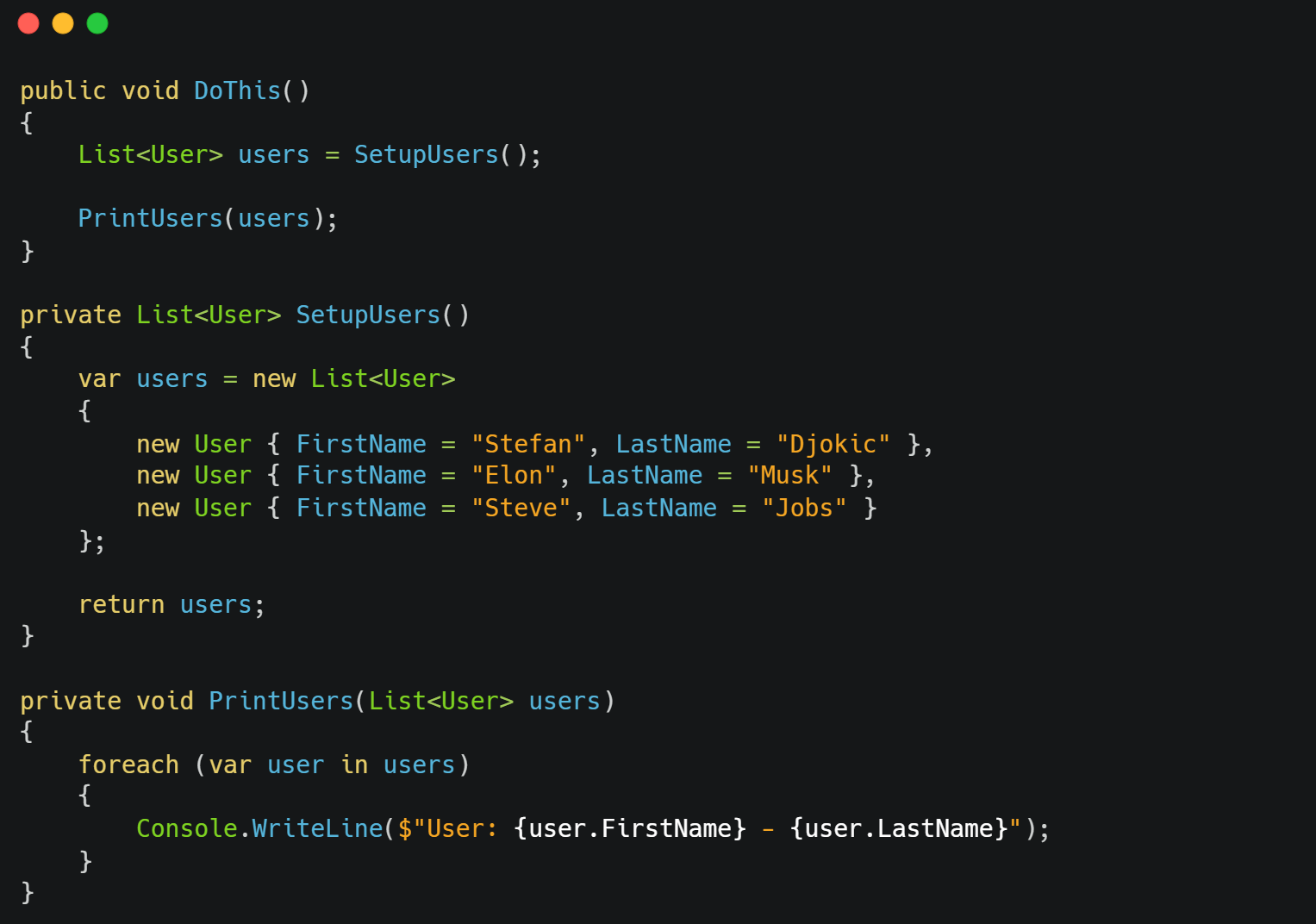
That's all from me for today.
Make a coffee and check out source code directly on my GitHub repository.
** dream BIG! </b>
There are 3 ways I can help you:
My Design Patterns Ebooks
1. Design Patterns that Deliver
This isn’t just another design patterns book. Dive into real-world examples and practical solutions to real problems in real applications.Check out it here.
Go-to resource for understanding the core concepts of design patterns without the overwhelming complexity. In this concise and affordable ebook, I've distilled the essence of design patterns into an easy-to-digest format. It is a Beginner level. Check out it here.
Join TheCodeMan.net Newsletter
Every Monday morning, I share 1 actionable tip on C#, .NET & Arcitecture topic, that you can use right away.
Join 18,000+ subscribers to improve your .NET Knowledge.
Subscribe to
TheCodeMan.net
Subscribe to the TheCodeMan.net and be among the 18,000+ subscribers gaining practical tips and resources to enhance your .NET expertise.